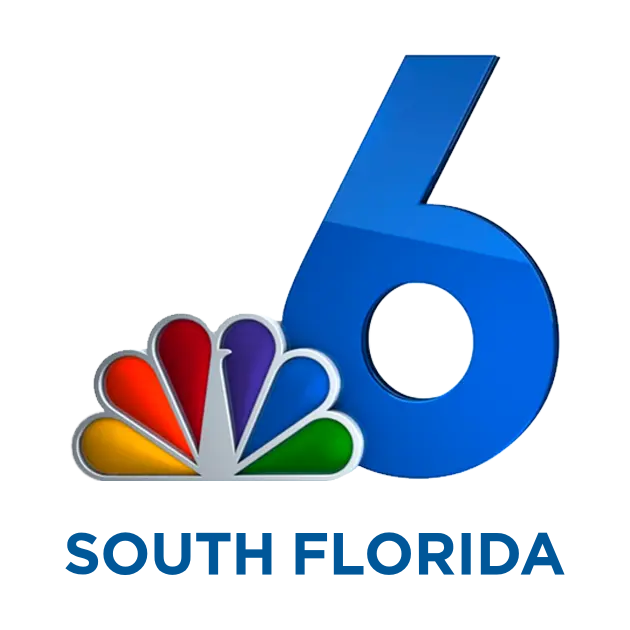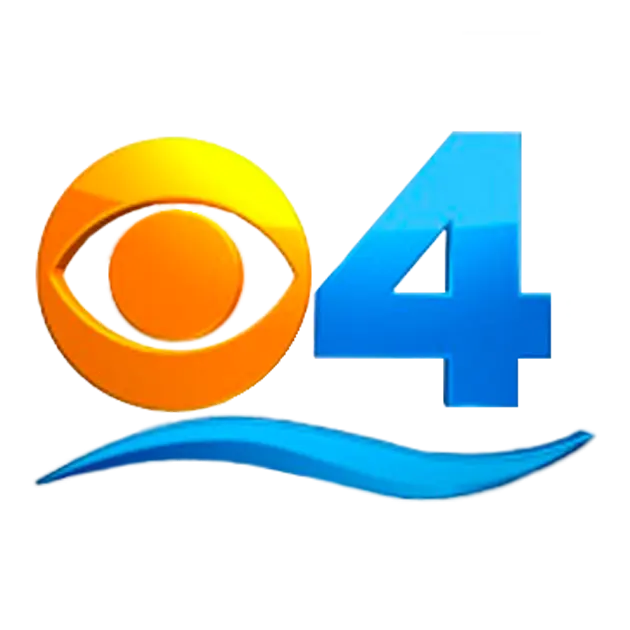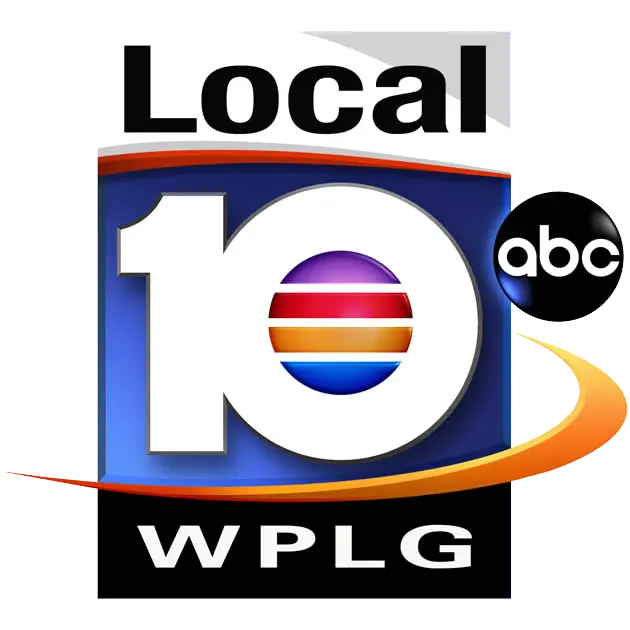















Hourly capacity is crucial in the theme park business. The more people attractions handle per hour, the shorter the lines. This means guests can enjoy more rides in one day. High hourly capacity equals happy customers.
Disney leads the way with some of the highest-capacity rides. At Walt Disney World’s Magic Kingdom, Pirates of the Caribbean can accommodate over 2,000 people per hour. However, with so many visitors, slip-and-fall accidents are common and highly dangerous.
With thousands of visitors moving through attractions every hour, the chances of encountering a hazardous condition increase. Wet surfaces, uneven walkways, and crowded areas can all lead to unexpected falls and injuries.
Besides standard slipping causes such as wet floors, guests have slipped out of unsecured or unsafe park rides. A 14-year-old died after slipping out of his seat at the Icon Park in Orlando since there was no safety belt. He fell 100 feet to his death, leading to a wrongful death lawsuit by his mother.
Safety measures like seatbelts could have saved the child. The manager’s, owner’s, and operator’s negligence caused his tragic death and lifelong pain for his family.
However, corporations behind theme parks don’t back down. They either refute claims or try to reduce them as much as possible.
Our experienced theme park slip-and-fall lawyers understand such complex cases. We know how to investigate the incident, gather evidence, and build a strong case on your behalf. We’ll work tirelessly to hold the responsible parties accountable and secure the compensation you deserve.
Don’t let a slip and fall accident ruin your experience and burden you with unexpected costs. Contact our dedicated team of theme park slip and fall lawyers today to discuss your case and explore your options for recovery. We’re here to help you every step of the way.
Theme Parks vs. Amusement Parks
Were you injured in a slip-and-fall accident at an amusement park or theme park in Florida? The differences can mean the difference between a large and small payout for injuries. This is especially true when considering safety concerns like slip and fall accidents.
Both types of parks offer fun and excitement. However, a theme Park slip and fall attorney will tell you that their unique features can affect chances and causes.
What Are Theme Parks?
Theme parks are designed around a central theme, offering a cohesive and immersive experience. Every ride, attraction, and food stand contributes to the overarching story or theme. These parks often invest heavily in elaborate decorations, themed rides, and costumed characters to create a unique environment.
Popular ones include:
What Are Amusement Parks?
Amusement parks, prioritize rides and attractions without a unifying theme. These parks provide a variety of thrill rides, games, and entertainment options. The atmosphere is more about enjoying individual attractions rather than experiencing a theme or story.
Popular ones include:
Theme parks and amusement parks offer fun attractions but differ in their approach. Amusement parks focus on providing thrilling experiences. Theme parks tell you a story through their attractions.
Slip and fall cases are common in both. A Florida personal injury lawyer can ensure you get the compensation you deserve.
Theme park rides offer an otherworldly experience but can have hidden hazards. These cause serious injuries and disrupt an otherwise enjoyable day. Understanding the common causes of theme park slip and fall accidents can help your theme park slip and fall attorney with your claim. Common causes of these accidents include.
Wet Surfaces
One of the most common causes of slip-and-fall accidents in theme parks is wet surfaces. Most theme parks, such as SeaWorld, have several water-based attractions. These include splash zones, water rides, and fountains. Additionally, weather conditions like rain can make pathways slippery. Here’s how these wet surfaces can lead to accidents.
Areas around water rides, such as splash zones and wave pools, often become wet and slippery, increasing the risk of slip and fall accidents. Visitors running or walking through these areas can slip and injure themselves.
Additionally, rain can quickly turn walkways into hazardous slip zones. it can also cause a car accident in a theme park parking lot. To reduce this risk, parks must clean and dry these surfaces quickly.
Spills from food and drink, whether from a restaurant or a snack stand, can also make pathways slippery. These spills must be cleaned up to prevent accidents and ensure visitor safety.
Uneven Surfaces
Uneven surfaces are another common cause of slip and fall accidents. Theme parks often feature creative and decorative pathways with uneven elevations. Here’s how these surfaces can cause problems.
Theme parks often use uneven decorative cobblestones and bricks for their pathways. While these elements enhance the park’s visual appeal, they are also tripping hazards. Over time, wear and tear can cause potholes or cracks.
Trips and falls are inevitable without timely repairs. Raised platforms, steps, and ramps are also hazardous. Without proper signage or maintenance, these elevated surfaces can become dangerous, particularly if they are not clearly visible to guests.
Regular maintenance and clear signage revealing uneven surfaces minimize slip-and-fall risks. Your Florida personal injury lawyer can provide more details.
Obstacles and Debris
Obstacles and debris left in walkways can lead to accidents. With the high volume of visitors in theme parks, items like trash, props, or even maintenance equipment can end up in pathways.
Litter and debris, such as paper, food wrappers, and broken items, are tripping hazards in theme parks. Parks must ensure that trash is regularly collected and pathways clear to prevent accidents.
Maintenance equipment left out during repairs can also obstruct walkways, increasing fall risks. Proper equipment storage and clear marking of maintenance areas ensure safety.
Additionally, large or poorly placed decorations create dangerous obstacles. Theme parks should ensure that decorations are installed safely and not block pathways.
Poor Lighting
Good lighting is essential for evening and nighttime operations. Poor lighting can hide hazards for visitors causing slip and fall accidents.
Well-lit pathways and clear signage are crucial for preventing slips and falls. Signs showing hazards or terrain changes must be well-lit and visible to prevent trips or slips.
Additionally, broken or malfunctioning lights increase fall risks. Regular lighting maintenance ensures well-lit areas that are safe for guests. Injuries caused in dark theme park areas are grounds for a personal injury lawsuit from a Florida theme park attorney.
No or Poor Signage
Signage informs visitors about potential hazards and guides them to various attractions in theme parks. However, missing, damaged, or worn signs can cause slip-and-fall accidents.
Warning signs about wet floors, uneven surfaces, or steps should be placed in highly visible areas to alert visitors and prevent accidents. Without these signs, guests can be caught off guard and slip.
Directional signs guide visitors through the park and prevent confusion, reducing the risk of falls from sudden turns or changes in terrain. Informational signs keep visitors updated on ground conditions and ongoing maintenance. This helps them navigate safely and avoid hazardous areas.
Effective and visible signage can prevent slip-and-fall accidents in theme parks.
Crowded Areas
Theme parks attract a large number of visitors, especially during peak seasons. Crowded areas can increase the number of slip-and-fall accidents.
Overcrowded walkways are risky in crowded theme parks. Visitors often spread debris and spills across walkways, creating slip hazards that can cause accidents. However, theme parks can minimize these risks with efficient crowd control strategies.
That’s what Universal did by investing in an ambitious crowd control system.
Similarly, poorly controlled ticket and ride queues can get congested. As people jostle and bump into each other, the risk of trips and falls increases. Proper design of queue areas and clear, spacious layouts can reduce this risk.
Crowded areas are hazardous during emergency evacuations. The increased movement and urgency can lead to accidents, including slips and falls. Ensuring clear evacuation routes and efficient crowd control can ensure visitor safety.
Wear and Tear
Theme park attractions and walkways can experience wear and tear with constant use. Over time, this can create hazardous conditions.
Aging rides can be a slip-and-fallslip-and-fall hazard. Older attractions may have worn-out surfaces or structural issues that pose risks to visitors. Regular maintenance and inspections are crucial to address these issues.
Pathway wear is another concern. Constant foot traffic can wear down pathways, causing cracks, uneven surfaces, or damaged areas. Keeping pathways in good condition is essential for preventing accidents.
Equipment wear is also a risk. Maintenance or operational equipment can become worn and unsafe if not regularly checked. Ensuring that all equipment is in good working order can prevent slip and fall hazards.
Regular inspections and maintenance are crucial to address issues caused by wear and tear.
Florida theme parks have slip-and-fall hazards that visitors often miss. Due to the machinery and crowds involved, injuries are often severe. A Florida theme park slip-and-fall attorney can help you recompense medical costs, lost wages, and more.
Slip and fall injuries in theme parks are often severe and long-lasting. The type of injury you get impacts your claim. Common ones your Florida personal injury attorney can help you get compensation for include:
Back and Neck Injuries
Lumbar sprains are common in theme parks. This occurs when the muscles and ligaments supporting the lower back tear or overstretch. Symptoms include lower back pain, muscle spasms, and limited mobility. You can get this sprain if you slip on a spilled drink or food near food stalls.
Similarly, a neck injury, such as a whiplash, can happen if the head is forcefully jerked forward and backward. This can cause pain, stiffness, headaches, and dizziness.
Head and Traumatic Brain Injuries
Concussions are frequent head injuries resulting from theme park falls. They occur when the brain shakes hard in the skull. Symptoms include headaches, dizziness, nausea, and difficulty concentrating. You can get concussed if you trip on broken pavement and hit your head as you fall.
More severe head injuries, like intracranial hemorrhages, are bleeding within the skull. These can cause severe symptoms, including loss of consciousness, seizures, and neurological issues.
Sprains and Strains
An ankle sprain is a common injury in theme park slips and falls. This occurs when the ligaments supporting the ankle joint are stretched or torn. Symptoms include pain, swelling, bruising, and difficulty walking. A hamstring strain, affecting the muscles in the back of the thigh, can result from a fall. This injury causes pain, muscle weakness, and difficulty walking or running.
Dislocated or Fractured Bones
A wrist fracture is a common theme park bone injury. You can get this if you try to break your fall with outstretched arms. Symptoms include pain, swelling, bruising, and difficulty moving the wrist.
You can also dislocate your shoulder with a hard impact. In this personal injury case, the upper arm bone slips out of the shoulder joint. This injury causes severe pain, limited arm movement, and a noticeable shoulder deformity. You can file a lawsuit for damages for it with an amusement park accident lawyer.
Torn Ligaments or Muscles
A torn ACL (anterior cruciate ligament) is a serious knee injury common in theme parks. It is a vital knee ligament; a tear can cause pain and swelling.
Similarly, a forceful fall can also cause a quadriceps muscle tear, which is located in the front of the thigh. This injury causes pain, weakness, and difficulty extending the knee. Your personal injury attorney can determine the cause and compensation.
Lacerations and Cuts
Slips and falls on a rough surface, such as a theme park ride, can lacerate or cut knees or elbows. These open wounds may require stitches and proper cleaning to prevent infection. Cuts on the face from impact with hard objects can also leave scars. These may require plastic surgery for repair.
Dental Injuries
Dental injuries are a common consequence of theme park slip and fall accidents. The impact can chip, knock out, and crack teeth. These injuries can cause significant pain, discomfort, and aesthetic concerns.
Dental injuries can cause physical pain, emotional distress, and eating/speech difficulties. Prompt dental care can prevent further damage and infection and restore oral function. A theme park slip-and-fall attorney can ensure compensation covers those costs.
Internal Injuries
Slip and fall accidents can cause serious hidden internal injuries. The force of the impact can damage vital organs such as the liver, spleen, kidneys, or intestines.
Symptoms of internal injuries can vary widely and may not appear immediately. Common signs include abdominal pain, difficulty breathing, persistent nausea, vomiting, or blood in urine or stool. These life-threatening injuries require immediate medical attention. In some cases, victims may face long recovery periods.
Eye Injuries
Theme park slips and falls can cause eye injuries, from minor irritations to vision loss. Corneal abrasions, caused by scratches on the eye surface, are common and often heal on their own.
However, serious injuries such as retinal detachment, which occurs when the light-sensitive tissue at the back of the eye pulls away, can lead to permanent vision loss. Foreign objects entering the eye or blunt force trauma can also cause significant damage.
Burns
Slip-and-fall accidents in theme parks can cause burn injuries. You can get burned badly if a crowd pushes you onto hot surfaces like grills, steam vents, or heated equipment. The severity depends on the surface temperature, contact duration, and burn depth.
First-degree burns damage the outer skin layer, causing redness and pain. Second-degree burns go deeper deeper, resulting in blisters and severe pain. Third-degree burns destroy both layers, causing extensive damage to underlying tissue.
Psychological Injuries
The trauma of a slip and fall accident can have a lasting impact on mental health. Many victims experience psychological issues such as anxiety, depression, and post-traumatic stress disorder (PTSD).
These conditions can interfere with daily life, relationships, and overall well-being. Symptoms may include flashbacks, nightmares, avoidance of places or activities related to the accident, difficulty concentrating, etc.
Your theme park slip and fall lawyer Seeking professional help from a mental health professional is essential for recovery and managing these challenges.
Delays can negatively impact your theme park slip and fall claim. It can reduce your claim or give the other party grounds for denial. Here are some things a Florida theme park slip and fall attorney recommends to prevent this:
Get Medical Attention
Get medical attention immediately after a theme park slip and fall accident. Even if you feel fine after the incident, some injuries might not immediately appear. Visit a medical professional for a thorough evaluation.
If the park has an on-site medical facility, go there for immediate care. If not, or if the injury seems serious, head to the nearest hospital.
Document all symptoms and injuries, even minor ones. These are important for potential legal claims and legal representation. Follow your doctor’s treatment plan, including follow-up appointments, taking prescribed medications, and following physical therapy recommendations.
Your medical documentation is strong evidence if you decide to sue, with help from a theme park slip-and-fall lawyer. Keep all records, bills, and reports for fair compensation.
Report the Incident
Protect your rights by immediately reporting the slip and fall accident to park authorities. Notify a park employee or manager about the incident. Get their contact information and ask for a written report or incident number. This documentation will create an official event record for your case.
The report should include details such as the accident’s date, time, and exact location. It should also provide a clear account of how the fall happened and any contributing factors. This report can be essential for your medical treatment and any legal actions you may consider later.
It helps to have a written record to support your claims and verify that the park officially acknowledged the incident. Additionally, keep a copy of any correspondence or documents related to the report for your records.
Gather Evidence
If it’s safe, take photos and videos of the accident scene. Capture images of the specific location, visible hazards, and the surrounding area. This visual evidence clearly shows the conditions that caused the accident.
Additionally, gather contact information from any witnesses. Their accounts can provide valuable support for your case. Get detailed statements regarding the accident. A thorough statement and your observations can strengthen your claim.
Also, take pictures of visible injuries or damages (such as a broken watch, glasses, phone, etc.). Your Florida personal injury lawyer can use these to prove negligence and establish liability.
Avoid Social Media
Posting pictures of the accident on Facebook can get you likes and sympathy. However, it can also harm your slip-and-fall claim. Theme parks have vigilant and strong legal teams that monitor social media posts to find information that could be used against you.
Somebody can take simple posts or comments out of context and use them against your claims. To protect your case, don’t post about the accident, injuries, or ongoing legal process. Instead, follow medical advice and work with your theme park slip-and-fall attorney.
They will handle communication and help you through the claims process. Limited social media activity ensures a strong case and avoids pitfalls.
Be Careful Of Insurance Companies
Insurance companies have one job – to protect their bottom line and policyholders. They can use underhanded tactics to reduce or deny your claim. This includes sympathizing with you so you reveal case information that can compromise it.
Don’t provide recorded statements without consulting a theme park slip-and-fall lawyer first. Insurance companies may offer low settlements. Consult a personal injury attorney specializing in personal injury claims before accepting offers.
An experienced Florida slip-and-fall attorney can determine a fair offer and demand it from the insurance company. They can use your medical records and other proof to negotiate a fair value for injury recovery and other damages.
Find a slip-and-fall lawyer with local expertise and a proven track record for a favorable case outcome.
Keep Detailed Records
Besides medical expenses, keep detailed records of all communications of the accident. This includes emails, letters, and phone call records with park authorities, insurance companies, and your attorney.
Accurate documentation of interactions provides a clear timeline and supports your case. Keep a personal journal to record your experiences, symptoms, and how the injury has affected your daily life.
This can show the impact of the accident on your overall well-being.
Be Patient and Persistent
Slip and fall accident cases can take time to resolve. It’s important to be patient and persistent throughout the process. Stay in regular contact with your Florida theme park attorney, and keep up with any required medical treatments or documentation.
The case may involve negotiations, paperwork, and lengthy legal proceedings. Remain proactive and communicate with all parties involved to keep your case on track and ensure you receive the compensation you deserve.
Consult with Theme Park Slip and Fall Attorney
An experienced slip-and-fall attorney can handle your case, from understanding your legal rights to guiding you through complex legal procedures. They can gather evidence, deal with insurance companies, and represent your interests in court if necessary.
Choose a theme park personal injury attorney who specializes in personal injury law and has experience with slip-and-fall cases. They will know local regulations and can create a legal strategy according to your situation. You can discuss your case without financial commitment. At Madalon Law, the first meeting is FREE of charge.
According to your case, a dedicated theme park personal injury lawyer can help you claim the following damages:
Medical Bills
This includes all treatment expenses. This can include costs for hospital visits, surgeries, doctor’s appointments, and prescription medications if needed. These costs are also covered if you need ongoing treatment, such as physical therapy or specialist visits.
Keep all receipts and statements from healthcare providers. These documents prove the extent of your medical expenses. You can include these anticipated costs in your claim if your injuries require future medical care, such as long-term therapy or surgery. The damages cover all expenses necessary to treat your injuries and help you recover.
Lost Wages and Salaries
If your theme park slip and fall injuries made you miss work, you can claim compensation for those. This includes the income you lose while recovering from your injuries. You can also claim future lost wages if they impact it long-term or permanently.
Your slip and fall attorney must provide evidence of your income before the accident, such as pay stubs or tax returns. You will also need to show proof of the time you missed work because of the injury.
You might be entitled to compensation if you cannot do the same job or work as many hours in the future. This covers the financial impact of your income loss.
Recovery or Rehabilitation
After a serious theme park slip-and-fall accident, you may need physical rehab. Your claim can cover those costs, including expenses for any ongoing therapy or rehabilitation needed to regain your health.
These costs are covered if you need physical therapy to recover mobility or strength. Occupational therapy is also included if needed to help you return to daily activities or work. Sometimes, you might need special medical equipment or home modifications to aid in your recovery. These are also covered.
Document all rehabilitation expenses and record treatment info and costs. These can be part of the compensation for your full recovery.
Pain and Suffering
Pain and suffering damages cover the physical and emotional distress from the accident. This includes injury pain, as well as the emotional impact, such as anxiety or depression.
Pain and suffering are not directly quantifiable, unlike medical bills or lost wages. Instead, they are determined by injury severity and its life impact. The judge or jury will consider factors such as the duration and intensity of your pain, any permanent changes in your health, and the impact on your daily life and relationships.
This compensation covers the non-economic impact of the accident on your overall well-being.
Emotional Distress
Emotional distress damages cover the psychological impact of the accident. This can include anxiety, depression, or trauma resulting from the fall. If the accident has caused significant mental anguish, you can seek compensation for these emotional effects.
Documentation from mental health professionals, such as therapists or psychologists, can support this claim. These damages cover the mental suffering and disruption caused by the injury, besides physical pain.
Loss of Enjoyment of Life
Loss of enjoyment of life is the injury impact on daily activities you once enjoyed. You may claim damages for this loss if your injury limits your ability to engage in hobbies, social events, or recreational activities.
This compensation acknowledges how the injury affects your overall quality of life and personal satisfaction. Evidence can include personal testimony, changes in your daily activities, and the impact on your social life.
Permanent Disability
If the theme park accident causes a permanent disability or long-term impairment, you can claim damages. Permanent disability affects your ability to work or perform daily activities.
Compensation for permanent disability aims to address the long-term effects on your life and earning capacity. Documentation from medical professionals can support this claim.
Home Modifications and Personal Assistance
You can claim these expenses if the theme park injury requires modifications to your home or personal assistance. This may include installing ramps, handrails, or other changes to make your home more accessible.
You might also need a caregiver or personal assistant to help with daily tasks. Keep detailed records of these expenses to support your claim.
What is the main reason for death or injury at an amusement park?
The main causes of death or injury at amusement parks are ride malfunctions, operator errors, inadequate supervision, and slip-and-fall accidents. Falls from rides are hazardous, causing severe injuries or fatalities. Slip and fall incidents also frequently result in serious injuries.
How common are theme park accidents?
Theme park accidents are relatively rare compared to other recreational activities but still occur. Factors like mechanical issues and human error contribute to these incidents. Slip and fall accidents are among the most common ways people get injured.
How would you describe a slip and fall accident?
A slip and fall accident happens if you slip on a slick surface or obstacles on walkways. These accidents can occur anywhere, including theme parks, causing injuries ranging from minor bruises to severe fractures, depending on fall severity.
How can I prevent slip and fall accidents at a theme park?
To prevent slip and fall accidents at a theme park, follow these tips:
What is premise liability in theme park negligence?
Theme park owners and operators must keep their property safe and promptly fix any known or probable dangers. This duty extends to hotels, restaurants, and other nearby businesses. Slip and fall accidents are the most common premises liability claims. An assault accident victim can also claim inadequate security under this legal theory.
What is product liability in theme parks?
Product liability covers accidents caused by defective ride components or dangerous items from gift shops. A thorough investigation can determine the responsible parties.
What is ordinary negligence in the context of theme parks?
Ordinary negligence happens when theme park operators or employees don’t take reasonable steps to ensure visitor safety. This can lead to injuries. For example, if a ride operator fails to maintain equipment, causing issues like loose seats or broken restraints, it can result in accidents and injuries.
What is a dangerous condition in a theme park?
A dangerous condition in a theme park is any hazard that can cause accidents or injuries. For example, if cooking oil spills onto a walkway and makes it slippery, this creates a slip hazard. Such conditions can make walking safely tricky and increase the risk of accidents.
What is the difference between an invitee and a licensee at a theme park?
Invitee: An invitee is someone invited to the theme park, either directly or indirectly. This means you are on the premises for a lawful reason, such as a paying visitor. The theme park owes invitees a higher duty of care to ensure their safety.
Licensee: A licensee is on the property for their benefit, not the owner’s. For example, if you go to the park’s entrance to use the restroom but don’t buy a ticket, you are a licensee. The theme park has a lower duty of care towards licensees than invitees.
If you or a loved one has been injured at an amusement park or theme park in Orlando or the State of Florida, contact Madalon Law immediately. You may be entitled to compensation. Get a free consultation with our dedicated Florida theme park slip and fall lawyers today.
We understand the corporations behind theme parks and how they try to reduce slip-and-fall claims. Our slip-and-fall lawyers have seen it all. Based on your injuries and damages, we can develop a custom legal strategy for fair compensation.